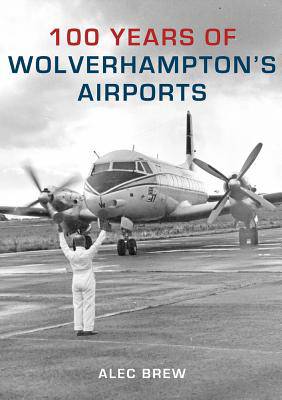
- Retrait gratuit dans votre magasin Club
- 7.000.000 titres dans notre catalogue
- Payer en toute sécurité
- Toujours un magasin près de chez vous
- Retrait gratuit dans votre magasin Club
- 7.000.0000 titres dans notre catalogue
- Payer en toute sécurité
- Toujours un magasin près de chez vous
Description
On 27 June 1910, the first ever all-British Flying Meeting began at Dunstall Park racecourse, Wolverhampton, and began an unbroken century of flying in the area. Dunstall Park, actually one of the first airports in the whole country, was to remain the town's airport until after the First World War, though an anti-Zeppelin landing strip was established at the Fern Fields, Perton, during the War. Though dogged by bad weather the Flying Meeting, only the third ever held in the country, attracted huge crowds, and considerable Press interest. After the Meeting most of the flyers left, but Dunstall Park continued to be used to test fly the odd aircraft, most notably those built by the two local car companies, Sunbeam and Star. The pioneer of British Airships, E. T. Willows, based his airship at Dunstall Park for a while, and balloon pilots took advantage of the proximity of Wolverhampton Gas Works to inflate their envelopes before setting course for wherever the wind took them. RAF Pendeford was built to serve the local area. Wolverhampton's first true municipal airport was built at Barnhurst Farm, Pendeford. Though flying had already commenced, in 1936, Wolverhampton Airport did not officially open until 27 June 1938, exactly twenty-eight years after Dunstall Park. The municipal airport was taken over as a training airfield, as RAF Wolverhampton, during the War, but resumed its civil function at the end. RAF Perton closed after the War, but remained largely untouched until the huge new housing estate was built on it, during the 1970s. A similar fate awaited Pendeford after its closure in 1971. The former RAF airfield at Halfpenny Green was re-opened, for civil flying in 1961. Halfpenny Green had been built as a RAF training airfield during the War, and was re-opened after its post-war closure in the early 1950s. After lying dormant for seven years, it became Wolverhampton's de facto airport with the closure of Pendeford, a fact recognised by its subsequent re-branding, firstly as Wolverhampton Business Airport, and now Wolverhampton Halfpenny Green Airport. On 27 June 2010, Wolverhampton starts its hundredth year of having a designated local airport.
Spécifications
Parties prenantes
- Auteur(s) :
- Editeur:
Contenu
- Nombre de pages :
- 96
- Langue:
- Anglais
Caractéristiques
- EAN:
- 9781848684867
- Date de parution :
- 15-10-09
- Format:
- Livre broché
- Format numérique:
- Trade paperback (VS)
- Dimensions :
- 165 mm x 234 mm
- Poids :
- 235 g

Les avis
Nous publions uniquement les avis qui respectent les conditions requises. Consultez nos conditions pour les avis.






